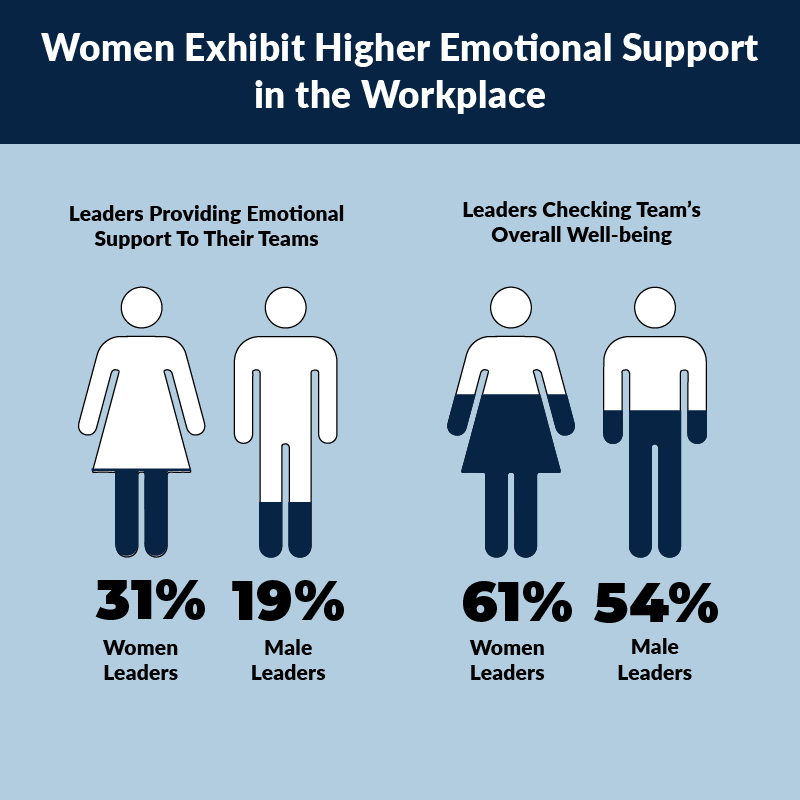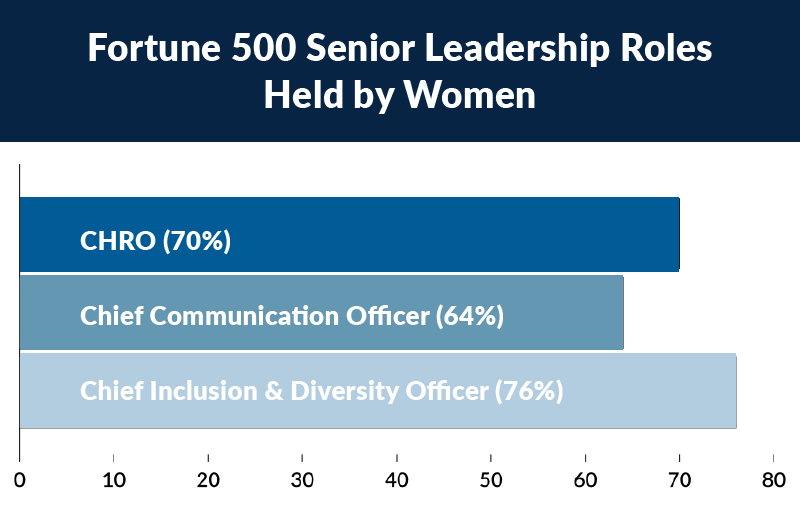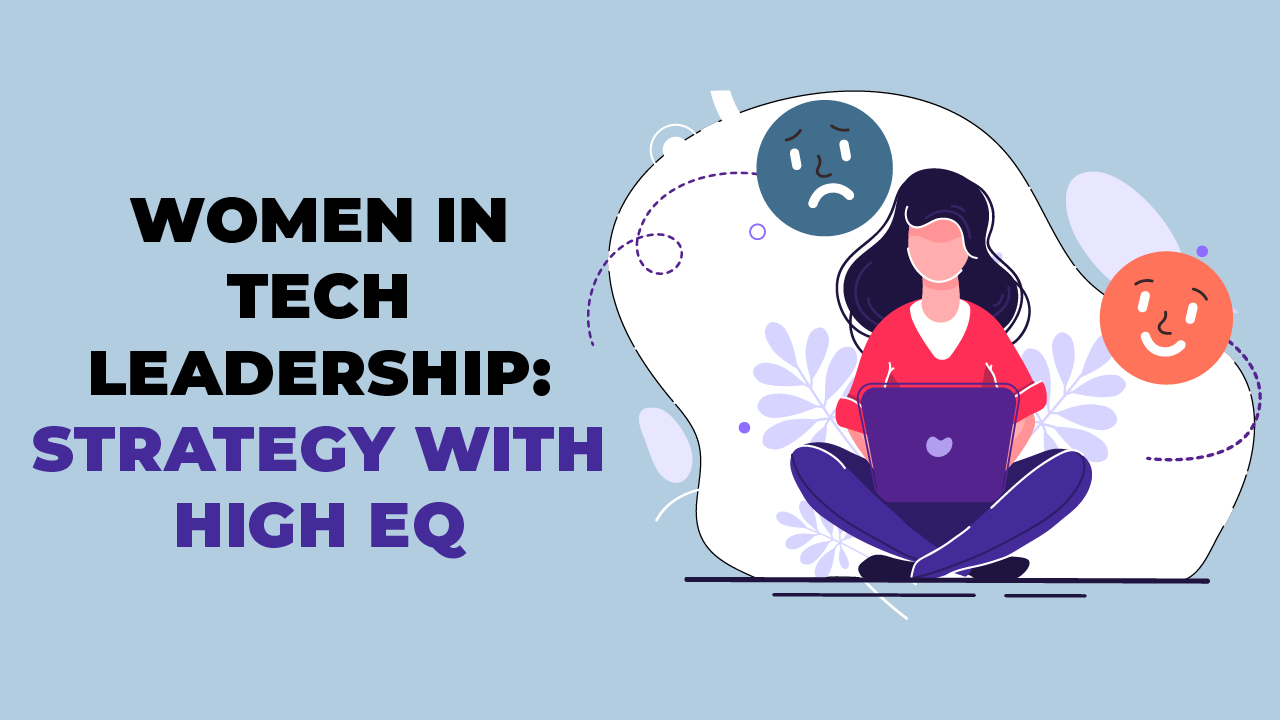As a young woman starting her career, I am hyper-aware of the lack of gender representation in tech and the modest levels of diversity in tech altogether. Of course, there has been a rise in tech diversity initiatives, more women in STEM, and more women in tech leadership positions. But a closer look at the numbers makes me wonder if the only shot someone like me has of achieving top-level leadership status is through one of the more “emotional” roles like HR.
[Check out this edition of The PTP Report on why diversity and inclusion are important to hiring]
Emotional intelligence is traditionally viewed as a “feminine” trait. But the association between women and emotional intelligence (“EQ” if you’re hip) is more than just a societal perception. Many studies have suggested a significant link between women and various strengths related to emotional intelligence. Still, despite the EQ women bring to the table, and the demonstrated effectiveness of EQ in the workplace, women in IT are still significantly underrepresented, especially in leadership positions.
Women’s emotional intelligence strengths
Women are, indeed, recognized for their emotional intelligence, as they should be. Plenty of research supports women’s strengths in areas that determine emotional intelligence.
Collaboration: A 2010 study by Woolley et al. found that the presence of women in a group greatly improved its collective intelligence, which positively correlated with the average social sensitivity of group members and equality in conversational turn-taking.
Trust and fairness: According to a 2022 study by Joshi and Diekman, the mere presence of a female leader led participants to anticipate fairer treatment; this tendency was discovered across female and male–dominated industries.
Allyship: McKinsey & Company (2021) found that 38% of women in senior positions mentored or sponsored one or more women of color, compared to 26% of men. They also found that women are twice as likely to spend time on equity, inclusion, and diversity than men.
Emotional support: McKinsey also found that 31% of women provide emotional support compared to 19% of male managers. And up to 61% of women leaders check on the team’s overall well-being compared to 54% of men in the same positions.

Yet despite women’s demonstrated strengths in these areas, they still represent only 25% of C-Suite positions in tech. Of course, overall gender bias is the culprit, but looking even deeper, I wonder: Does tech value emotional intelligence enough?
The “promising” female representation in tech leadership roles
We can begin to answer this question by looking at which C-Suite positions women are most likely to hold. (Hint: It’s the ones most known for their emotional involvement.)
The senior leadership roles held by women in Fortune 500 companies include: CHRO (70%), chief communication officer (64%), and chief inclusion and diversity officer (76%). Meanwhile, women hold few of the higher-paying, more prestigious titles, including CEO (10%), COO (11%), and CFO (18%).
I applaud the accomplishments of women in HR leadership positions — it takes an indisputable amount of work and perseverance to earn that spot, and any woman in such roles should be proud to be there — but we can’t ignore the lack of women in CEO roles. And we can’t not wonder why these trends exist.

Of course, there’s the obvious answer: CEOs hold more power and earn higher salaries than CHROs and CDOs, so in a male-dominated industry like tech (and in a male-dominated society in general), it’s not surprising. But if we look deeper, we find more nuance to this flawed system, one that answers a question I posed earlier. And the answer is no, we do not value emotional intelligence enough in tech.
But we should.
Why emotional intelligence matters in tech
Let’s be real — the world needs more emotional intelligence. And now, some of the most powerful people in the world are tech leaders (think Musk, Zuckerberg, Bezos, etc.). So when tech leadership becomes emotionally intelligent, as cheesy as it sounds, it might just make the world a better place.
But what place does EQ have in tech? According to the experts at Deloitte, it can revolutionize several key areas of the industry. Some examples:
Empathy: Empathetic leaders put themselves in the shoes of their employees, peers, and audience, making for better communication, decision-making, engagement, and everything that affects company stakeholders.
Communication: Tech is a dynamic space where the shy IT guy shares a meeting space with the outspoken sales rep. Communicators with high EQ are adept at connecting with people across backgrounds and expertise, bringing out the best ideas from diverse perspectives.
Decision-making: People with high EQ recognize when their emotions impact their judgment and are able to self-regulate and return to a rational state of mind before making decisions.
Engagement: When leaders have high EQ, they are more sensitive to the needs of their employees — needs such as flexibility, career advancement opportunities, and a sense of belonging. The result: more engagement and less turnover.
[Searching for career advancement in IT? Check out PTP’s available jobs.]
AI Ethics: Artificial intelligence is a great example of something “techy” that may seem unrelated to emotional intelligence but in fact needs it desperately to be truly effective and sustainable. For example:
Mitigating bias: AI requires heaps of data. And much of this data is riddled with bias, because our world is riddled with bias. Tech needs emotional intelligence to understand why data may not be fully representative of diverse perspectives and how to advance while prioritizing inclusivity.
Transparency: EQ in AI adoption means understanding the implications of using someone else’s intellectual property and how to achieve innovation with integrity. It also means practicing transparency and communication with employees, consumers, and other stakeholders.
Emotional intelligence touches both interpersonal and technical practices in the tech industry, and organizations who prioritize emotional intelligence at the highest level of leadership can expect a world of benefits.
Conclusion
Emotional intelligence is something that will trickle down into the entire organization, into its employees, and into its audience and consumers — improving collaboration, communication, and everything that makes organizations run smoothly and successfully. But achieving these results doesn’t come from putting more women in CHRO and CDO roles (which we should still do) but from instilling emotional intelligence into the highest, most impactful positions of the C-Suite.
Young women like me, along with young people from all marginalized communities, need to see people like us at the top in order to fuel the drive we already possess. We don’t just need people who look like us but people who value the same things as us. Things like communication, empathy, collaboration. Things like emotional intelligence.





